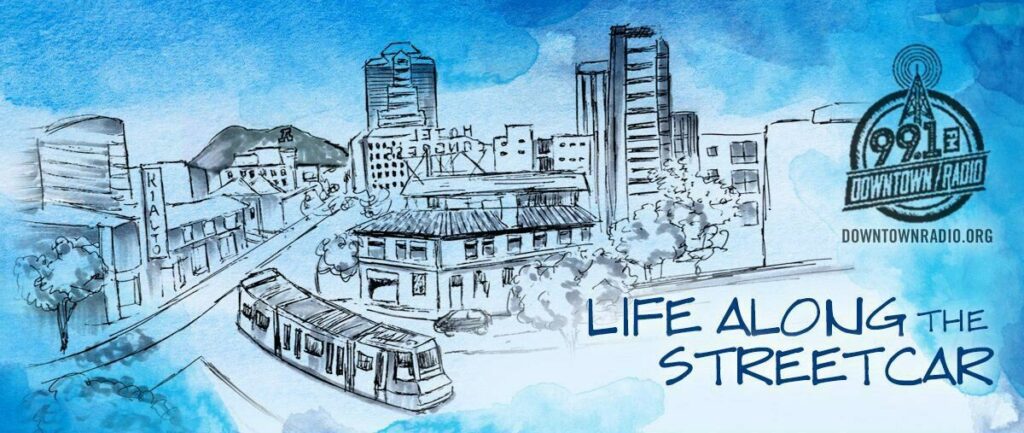This week we discuss Trains and wild west gangs. Today is July 7th my name is Tom Heath and you’re listening to “Life Along the Streetcar” Each and every Sunday our focus is on Social, Cultural and Economic impacts in Tucson’s Urban Core and we shed light on hidden gems everyone should know about. From A Mountain to the U of A and all stops in between. You get the inside track- right here on 99.1 FM, streaming on DowntownRadio.org- we’re also available on your iPhone or Android using our very own Downtown Radio app. Reach us by email contact@lifealongthestreetcar.org — interact with us on Facebook @Life Along the Streetcar and follow us on Twitter @StreetcarLife .Our intro music is by Ryanhood and we exit with Ted Riviera’s Gunrunners We start today with more news on the water front.
Preserving the 1880 Transformation of Tucson
From March 20, 1880 forward, the growth of Tucson was rail driven and our economy was built on the 5 C’s of copper, cattle, citrus, cotton and climate. It’s not an overstatement to say the impact of the railroad was a complete transformation of Tucson from village to the city we know today. That history and transformation is cataloged at the Southern Arizona Transportation Museum- A division of Old Pueblo Trolley, Inc. Located on Toole Avenue in the restored Depot Plaza the museum occupies the west end, while Maynard’s Kitchen and Market anchors the east. The museum is free to the public and provides a huge historic narrative in a small space. The museum is not a look don’t touch kind of place and creates interactive ways for attendees to engage and, actually, feel the rail heritage- Activities like learning Morse Code and tapping out a telegram. The museum is family friendly with a huge focus for the younger generation, but make no mistake this is a true collection of the fundamental building blocks of Tucson. All ages will find it interesting and valuable. We sat down with the Ken Karrels in 2018. Ken is the director of the Museum and lifelong fan of the locomotive
How History Remembers a Gun Fighter
Nicholas and Virginia Earp raised a family of five sons and four daughters on a series of farms in Illinois and Iowa. Three of the Earps’ sons went on to an infamous life due to their involvement in the shootout at the Ok Corral. Wyatt, Virgil, and Morgan Earp fought a brief shoot-out with the Clantons and McLaurys in Tombstone On October 26, 1881. This would be another bloody battle in a very dangerous place. A town with a the moniker of too tough to die. I bring this up because I saw that yesterday, July 6th, was the anniversary of the death of the youngest Earp brother, Warren. He was not a part of the legendary shootout, but did meet a violent end in Wilcox Arizona. On July 6th 1900, Warren Earp was shot and killed by Johnny Boyett. The two men had a history and on this fateful day, Boyett would shoot Earp, who was armed with only a pocket knife. This took pace 18 years after Earp’s older brother, Morgan, was shot and killed in a saloon in Tombstone Arizona. Morgan’s death was an extension of the feud between the Earps and Clantons- The Ok Corral was the most notable, but certainly, not the only bloody encounter. Morgan was shot while playing billiards on a Saturday night. And on the following Monday one if his assassins, Frank Stillwell was killed by the Wyatt Earp, Doc Holliday and other members of a posse assembled to hunt down Morgan’s killers. Here is where things take an interesting turn for me.




